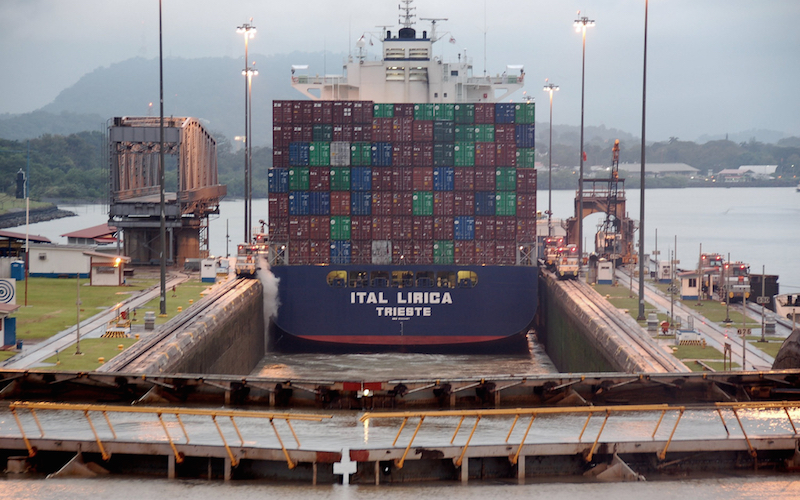
Nicaragua Canal: Major Project and Major Impact
The Nicaraguan canal, once completed, will be deeper, wider, and nearly three times as long as the Panama canal, and this waterway is expected to transform Central America and the surrounding region.
Construction of the $50 billion, 172-mile-long waterway that would transport goods between the Pacific Ocean and the Caribbean broke ground on December 22, 2014, and is being undertaken by the privately owned Hong Kong Nicaraguan Development (HKND) Group, created and led by CEO and Chairman, Chinese billionaire Wang Jing. The company projects the project will take only 5-years to complete – a remarkable feat considering workers took 10 years to build the Panama canal over 100 years ago.
Benefits of the Nicaraguan Canal
Nicaraguan officials, according to the Nicaragua Dispatch, foresee the canal completely transforming one of the poorest countries in the Western hemisphere. They claim the canal will ultimately double the economy and boost employment threefold while simultaneously pulling over 400,000 out of poverty by 2018.
The Nicaraguan canal would be able to negotiate vessels capable of moving 25,000 shipping containers – double the ship haul of the Panama canal once ongoing renovations are complete. Such capacity should benefit countries seeking to transport goods, natural resources, or other commodities from South America to Asia or vise-versa.
Nicaraguan universities too anticipate tremendous success from the proposed canal and have positioned themselves to fully capitalize on the once-in-a-lifetime opportunity. The National Council of Universities has offered new degrees related to engineering and has plans for students to learn Mandarin as a second language.
Negative Impact of the Canal
Questions regarding the project were raised even prior to groundbreaking as a lack of transparency surrounded the bidding process. HKND Group won an unopposed bid in 2013 for this project. It secured a 50-year concession to construct and operate the waterway and an option to extend to 100 years. The Nicaraguan government pushed the proposal through the National Assembly with little resistance.
Debate about how the canal will impact Nicaragua’s environmental and social realms remains an issue. Environmentalists say the canal route would destroy biodiverse-rich parts of rainforest. “In our view, this canal could create an environmental disaster in Nicaragua and beyond. The excavation of hundreds of kilometers from coast to coast…will destroy around 400,000 hectares of rainforests and wetlands,” Jorge A. Huete- Pérez, president of the Nicaraguan Academy of Sciences penned in Nature, together with Axel Meyer, professor of zoology at the University of Konstanz, Germany.
The route is planned to bisect Lake Nicaragua, the largest freshwater lake in Central America. It serves as a major source of water and is home to diverse aquatic life; both of which would likely feel the negative impact. Huete- Pérez and Meyer further declare: “The extensive dredging required [to deepen Lake Nicaragua] would dump millions of tons of sludge either into other parts of the lake or on to nearby land. Either way, the sludge will probably end up as damaging sedimentation.”
Further changes include flooding of a 150 square-mile plain to construct a reservoir which would aid canal lock water-level augmentation.
Concerns Over Legality
The route also has a substantial human impact. According to the 1987 Nicaraguan Constitution, the land which includes much of the proposed route, is home to and owned by hundreds of indigenous tribes including the Rama and Creole. Nicaraguan officials unilaterally sidestepped this roadblock in December 2013 by passing Law 840, which amends the national constitution to accommodate Wang’s company.
By granting HKND the ability to expropriate land and resources as the company deems necessary to complete its work, which include among other smaller projects like creation of railways, factories, and an airport, HKND is in essence above Nicaraguan law. While HKND is granted such authority, a major point of contention among those impacted remains land compensation. Critics say that displaced people are only permitted to be paid the tax-assessed value of their property, which is often below market value. Protests by farmers and others contesting this contentious issue have transpired and have on occasion turned violent.
A major issue still is the completion of an Environmental Impact Assessment (EIA), which typically is performed by the government prior to groundbreaking. It examines the environmental impact of a project on local area wildlife, the surrounding ecosystem, and impact on human populations. After having been delayed for months, an EIA was released on May 31, 2015, by HKND and Environmental Resource Management (ERM); however, official results of the study have not been made public. Selected scientists have reviewed only certain information in the report and have concluded that the study contains weaknesses.
Broader Geopolitical Implications
Growing Chinese economic and trade investment in South America should not be overlooked as Chinese-South American trade has increased from $12 billion in 2000 to $289 billion in 2013. Greater opportunities occurred in January 2015, when President of China Xi Jinping, announced $250 billion in investment in South America over ten years. Beijing has denied any involvement in HKND’s project.
Chinese trade with South America has become greatly diversified and will likely continue to grow. Venezuela, for example, was China’s largest South American crude oil supplier at 4 percent in 2014, according to a May 2015 U.S. Energy and Information Agency report on China, followed by Columbia and Brazil at 3 and 2 percent.
China overtook Germany to become the third-largest arms supplier in the world behind the United States and Russia, according to the recently issued March 2015 report by the Stockholm International Peace Research Institute. Although the report identifies that the majority of Chinese buyers are not located in South America, Beijing does sell arms to Venezuela, Peru, and Bolivia. Beijing will likely tap into this available arms market.
With the number of transport days from the Caribbean to China projected to be cut dramatically by the Nicaraguan canal, Beijing would be a primary beneficiary. As Beijing continues to boost its economic ties with South America, the completion of the Nicaraguan canal would only bolster its growing global influence.
